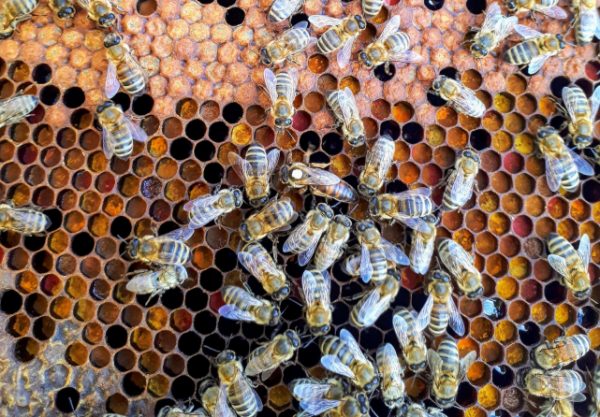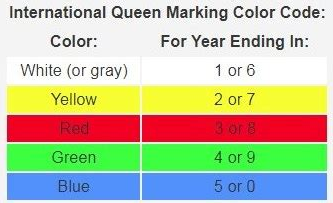DIY Queen Marking for the Beginner

Have you ever struggled to find your Queen bee amidst your bustling hive? It can be an intimidating task, even for seasoned beekeepers. The worst-case scenario when trying to locate a Queen is the possibility of accidentally injuring or killing her while trying to find her. This not only causes distress for the hive but decreases productivity and may even lead to colony degradation or failure. However, the alternative is to correctly mark the Queen to make identification as easy as possible, providing you with reassurance that your hive is healthy and productive with the known queen. Here are our Best Practices for marking your Queen bee.
Important Facts About Queen Marking Year Colors:

- Queen bees are marked with various colors to indicate the year they were born.
- The international year marking code uses a specific color for each year, and these colors rotate every five years.
- Queen marking is essential in beekeeping to keep track of the age and health of the queen and the overall hive.
- The most commonly used colors for queen marking are blue, white, yellow, green, and red.
- The blue color is used for queens born in years ending in 0 and 5, while white is for years ending in 1 and 6, yellow for 2 and 7, red for 3 and 8, and green for 4 and 9.
- Queen marking can be done using a special pen or by using a tiny colored collar.
- The process of marking a queen bee is simple and safe and can be done with minimal disturbance to the hive.
- Queen marking is a crucial part of beekeeping management, as it helps track the queen’s productivity, detect issues with the hive, and promote better records and even track the age of the queen.
Use a Correctly-Sized Marker
Some Queen markers can be too large or extensive, which may interfere with the Queen’s actions and feature a risk of squishing or injuring the Queen throughout the marking process, or globbing out far too much paint. Therefore, it’s essential to note the size of the queen when selecting a marker to use. It is advisable to use an medium or perhaps fine point marker, making a tiny but clearly visible dot on the thorax soft tissue to prevent causing damage.
Only Mark the Queen When She is Easily Located
One thing to note is that the less time the hive is open and active, the less stress there is on the bees. Therefore, it’s crucial to approach this task when there’s less aggression in the hive. The perfect time to mark a queen is during a brood inspection when she’s conveniently situated and not too difficult to access. And typically when you see fresh eggs in the cell or very young comma shaped larvae, you are much more likely to find the queen nearby.
Reevaluate Frequently for Wear
You will need to keep checking the Queen’s mark throughout the season. It may fade, meaning that you will need to remark it. As part of this inspection, look at your queen’s health and take note of anything irregular, making a detailed record of the hive’s development.
Recap of the Most Effective Best Practices
In summary, use the following best practices:
Select the right marker
Mark the Queen when she is easily accessible
Regularly reevaluate for wear or damage.
If you are serious about marking Queen bees and rearing in your apiary, there are excellent advanced techniques to consider, such as the use of non-toxic paint and marking using the colors coordinated by the proper year. These more advanced methods simplify the process even further and are worth exploring if you are invested in your hive’s success.
Marking the Queen is a crucial task in beekeeping that provides you with insight into the health and productivity of your bee colony (as it relates to your favorite queen and her genetic offspring), and can help you track that the same queen is in the colony when you last inspected. If in a subsequent inspection they have an unmarked queen, that is a red flag, to indicate that they have superseded your marked queen. By following these best practices, you’ll be able to minimize the risks and foster the success of the hive.
Are you marking your Queen bee correctly? What best practices have you implemented in your bee colony? Share your experiences in the comments below.